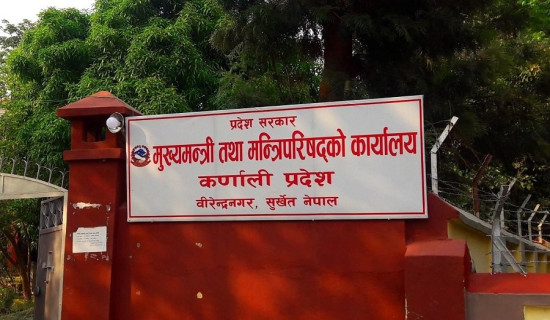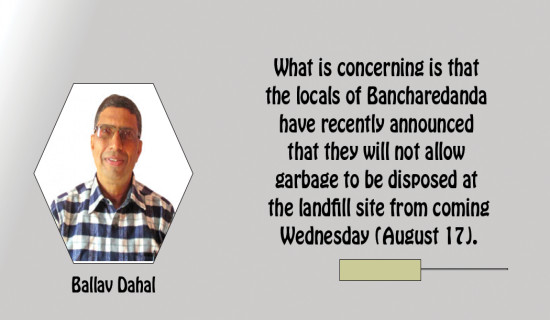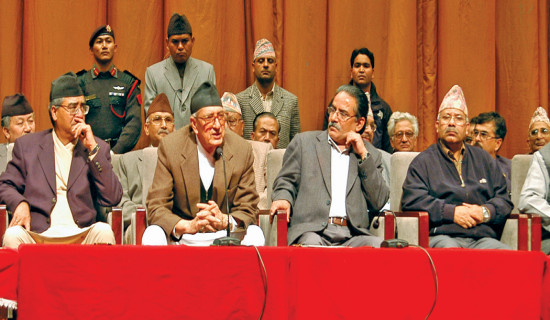- Thursday, 8 January 2026
Deck Cleared To Build Nijgadh Airport
The uncertainty over the fate of the proposed Nijgadh International Airport has now ended with the issuance of the full text of a landmark verdict on this national pride project by the Supreme Court (SC). The verdict delivered last month had ordered the government to stop the entire process concerning the construction of the much-hyped airport by citing serious environmental issues. Environmentalists had heartily welcomed the apex court’s decision, saying that it would help protect the rich biodiversity in the planned airport site and surrounding areas possess. Earlier in 2017, an environmental and social impact assessment suggested cutting about 2.4 million trees in three phases to build the airport. Many environmentalists had strongly opposed that idea.
The judgment had left the mega airport project in limbo, causing ripples nationwide. Many people, especially the local stakeholders, had even resorted to the street protests. A number of political leaders, development activists and locals of the Madhes Province had suspected the ‘intention’ of the verdict and vehemently flayed it. Some had also blamed the judiciary for interfering with the executive’s prerogatives of carrying out development projects.
But no sooner had the SC made public the full text of its verdict than it rekindled hopes among development campaigners and local residents that this important project would materialise. The verdict was made by a five-member bench. However, the bench failed to take a consensual decision. Of the total members, three directed the government to scrap the whole process while the remaining two noted their difference that the executive could give continuity to the project after conducting a fresh feasibility study. Anyway, the verdict has provided a nod to the government to implement the project after conducting an environmental impact assessment and reconsidering the site to ensure that the project will have less impact on the environment.
Firm commitment
In the meantime, top leaders of the ruling five-party alliance, including Prime Minister Sher Bahadur Deuba, reiterated their firm commitment to building the airport. They made an inspection visit to the planned Nijgadh airport site, the other day. During the visit, Prime Minister Deuba said that the government would construct the airport by minimising its impact on the environment.
Nepal had felt the need to build a new alternative airport to Kathmandu’s Tribhuvan International Airport (TIA) for more than two and a half decades. As an appealing tourist destination, the country had also seen a significant rise in the number of international travellers. The necessity of such an airport had widely been realised, especially after the two major air crashes in 1992. An aircraft of Thai International Airways crashed into a mountain while Pakistan International Airlines’ plane met with an accident at Bhattedanda of Lalitpur. Those accidents had portrayed the country’s skies as unsafe. It needs no mention that difficult topography and unpredictable weather conditions in the hilly and mountain regions of the country are considered as major causes of air accidents.
With the adoption of a liberalised aviation policy in 1990, the nation started witnessing a phenomenal growth in domestic as well as international flights. And the TIA, the country’s only international airport, began becoming overcrowded. Given such a scenario, the policymakers decided to explore suitable sites for constructing another international airport. And Nijgadh was chosen as a probable site for that.
In 2012, Landmark Worldwide Company from the Republic of Korea (RoK) was entrusted with the responsibility of conducting a detailed feasibility study for the project and presented its report to the government. Since then, the project has been moving ahead. But it has not been in implementation in full swing because of procedural and environmental obstacles. Managing funds for this mega infrastructure project has been a major challenge for the government. If this project keeps moving at a snail’s pace, it may take years for it to get completed.
Although successive governments has committed to constructing this airport, no concrete effort has so far been made in this connection. However, they have been allocating some funds for the airport project each year. For the fiscal year 2022/23, the government has set aside Rs. 260 million. But this is just peanuts for a project that requires funds exceeding Rs. 120 billion.
Anyway, the government has spent well over Rs. 2 billion for moving the project ahead while the Civil Aviation Authority of Nepal (CAAN) has already distributed about Rs. 800 million as compensation to the project-affected people. One year ago, the CAAN also spent some Rs. 300 million on preparing an improved master plan for the project.
Two international airports are now in operation within the country after the completion of the Gautam Buddha International Airport (GBIA). The Pokhara International Airport is also coming into operation in the near future. Even in such a scenario, the proposed Nijgadh airport is a must for the country as it is going to be an ultra-modern facility. The TIA is already in its saturation point. It handles more than 7 million domestic and international passengers annually, with more than 350 take-offs and landings daily.
Game changer
The country is in need of this airport as the TIA has already reached its saturation point. International passenger movement in Kathmandu is expected to cross 7.29 million in the next five years or so. It is a matter of pride that the proposed Nijgadh airport will become the largest in South Asia in terms of area it covers. As per the plan, the airport is going to be constructed in three phases. The first phase work is schedule to be complete in 10 years. With the completion of the third phase, the airport will have the capacity to handle as many as 60 million passengers each year. The airport is sure to become a game changer that will contribute towards taking our tourism and aviation sectors to newer heights.
(Dahal is a deputy executive editor of this daily.)

















